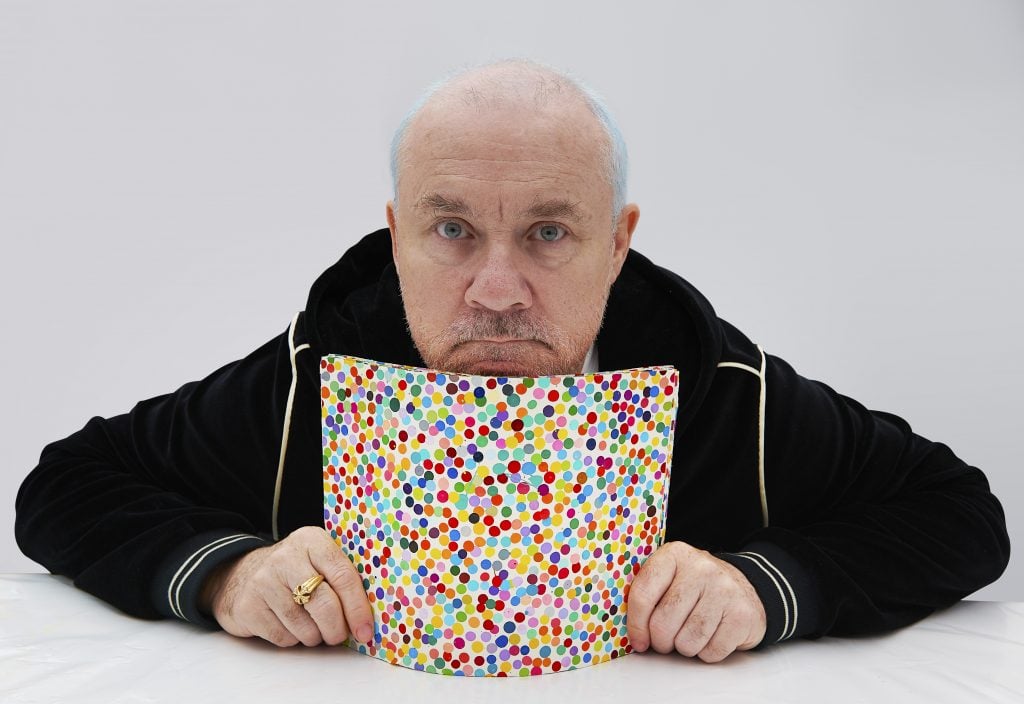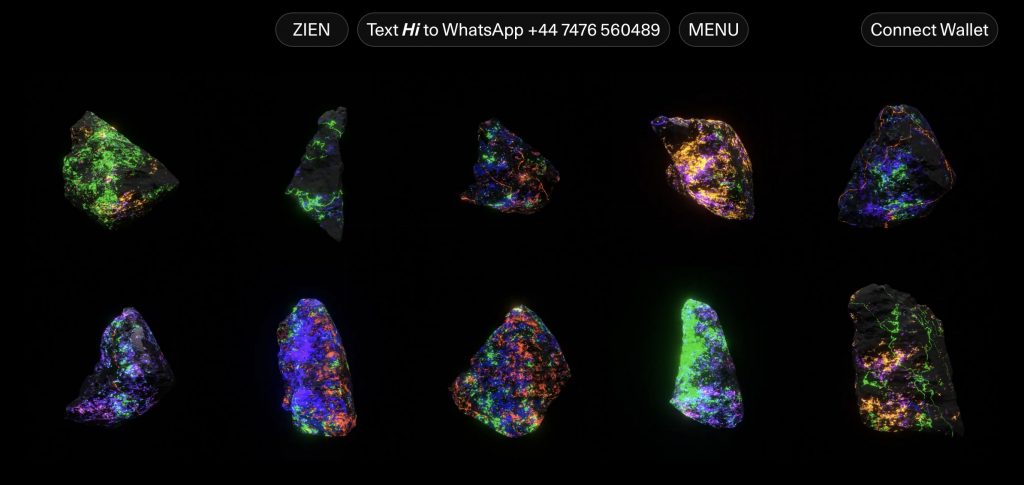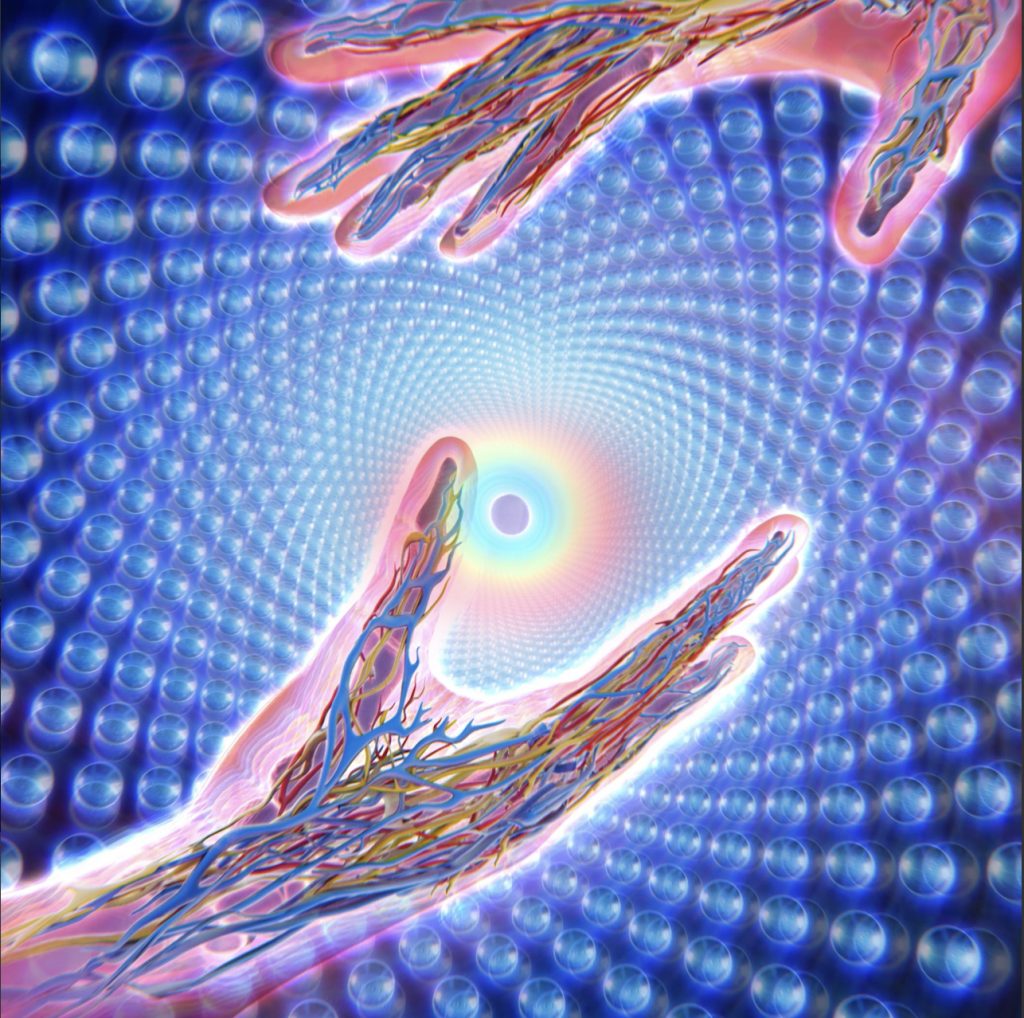Can “phygital” art keep collectors from walking away with NFT prices?
March 2021 will forever be remembered as the month NFTs went kaboom and burst into the mainstream when Beeple’s Weekdays: the first 5,000 days sold to crypto entrepreneur Metakovan for $69.3 million. Suddenly the art world took notice, and overnight NFTs became the year’s most talked about topic.
From SNL to Snoop Dogg, NFTs quickly took popular culture by storm. Athletes and celebrities struck; some shilled and rye-pulled the fans. Others made genuine contributions to the space, like when Grammy Award-winning producer Timbaland made NFTs out of strains to his beats — buyers got the rights to remix and profit from them.
Now, most of the initial hype has collapsed, thanks in part to the brutal crypto market. Pieces once bought for millions, now fetch barely a couple of hundred thousand at auction. The auction platforms aren’t doing much better: OpenSea, the biggest of them all, laid off 20 percent of its staff in July 2022. Sales volume is down significantly. An extremely muted sale earlier this year of generative art (digital art created with autonomous software) at Phillips showed that collectors are no longer as keen.
As the NFT art market faces a recalibration, what will become of the market for digital and physical art – the so-called “phygital”?

Damien Hirst with The Currency artworks, 2021. Photographed by Prudence Cuming Associates Ltd. © Damien Hirst and Science Ltd. All rights reserved, DACS 2022.
Wait – what is that?
“Phygital” – a term that causes a collective groan from many working in the crypto space – is an art form and a market that has flourished despite the broader market disaster in the sector. Art star Damien Hirst was one of the first to take NFTs into the realm of the phygital with his project “Currency,” a poll that asked collectors what they valued more: a painting or an NFT. He offered anyone who bought one of the thousand NFTs released for the project to exchange it for a physical work, and assumed to destroy the other. The results are in: collectors preferred the physical works. Next month, Hirst must burn 4,851 equivalent physical paintings out of an original set of 10,000.
But the preference – with 5,149 collectors opting for physical work and 4,851 for the NFTs – shows that there is still some uncertainty about which medium dominates. And this uncertainty about the direction of the NFT space feels far outside this mainstream, meaning that the new trend towards hybridized physical-digital art has been taken up by tens of thousands of other artists as well.
The reasons are not only financial, but also aesthetic. “Although the word ‘phygital’ sounds like a bad case of indigestion,” noted Artnet columnist Kenny Schachter. “Until dedicated devices devoted to viewing digital art improve, my voracious appetite for collecting will be more easily satiated with hybrid NFTs that have a physical component.” The market is never far behind: the artist, collector and curator is organizing an exhibition and auction of phygital art in December at the Kunsthaus Lempertz in Cologne. The sale is aptly called “Blender”.

Courtesy of Tiffany & Co.
The rematerialization of NFTs
If you look at the top of the market, there are some signs that heavyweights are betting big on “phygital”. Yuga Labs announced a collaboration with Tiffany’s & Co in August 2022. The sale, which consisted of 250 custom jewelry pendants made available to punk fans, quickly sold out at $50,000 a pop. Noah Davis, the new brand manager for CryptoPunks at Yuga Labs, seems to be leaning toward this type of partner.
According to Shumon Basar, narrative manager and co-founder of the art startup and curatorial collective Zien, there can also be new directions for art history. Basar told Artnet News that while he abhors the term phygital, he believes that some art created on the blockchain is capable of changing how we view the organizational dynamics of art itself, as well as its capital flows.
“64,000 years of art—from cave paintings to Picasso—has proven that when it comes to emotionally and intellectually moving encounters, sometimes a .JPEG isn’t enough,” Basar said. Founded in 2020 with Peter Holsgrove and Zoe Nolan, Zien is a WhatsApp channel dedicated to collecting contemporary art as “extended NFTs” — in other words, “digital art with material presence,” according to Basar. After early experimental drops with artists like Ed Fornieles, Eva Beresin and Petra Cortright, Zien has recently relaunched with a new ‘season that will include Shezad Dawood and Jakob Kudsk Steensen.
But perhaps the tension between the falling crypto market and physical-meets-digital art is most evident in Polish-born, New York-based Agnieszka Kurant’s “Sentimentite” series, also produced in collaboration with Zien. The project consists of 100 NFTs shaped by a technology known as sentiment analysis, a software capable of looking at seismic historical events and mining them for data to be used as the substance of her art.
Kurant’s unique physical sculptures are made from 60 objects historically used as currency, pulverized and then recast into physical sculptures, with buyers able to redeem an NFT for a physical work if they wish. The NFT, in this case, becomes a token holder or a receipt, and, crucially, not the art itself.

Agnieszka Kurant, Sentimentie, 2022. Courtesy Zien.
NFTs, physical art and crypto
A bigger question going forward is perhaps what the relationship will be between physical art, NFT technology, and crypto markets at the end of this current crypto winter. Crypto art pioneer and collector Ryan Zurrer, the owner of human one, Beeple’s first phygital sculpture consisting of a constantly updating 4-screen sculpture of an astronaut walking endlessly into space is betting big on the fact that the NFT market as a whole – phygital and purely digital work – is going nowhere.
The physical astronaut is just a shell for the NFT, which according to Beeple is the actual work. Zurrer also has a collection, called 1or1.works, which consists of over 1000 NFTs across “guilds” including music, metaverse, games, fashion and art.

Alex Grey, Psychedelic Healing, 2022. Part of the 1of1.works collection.
He believes NFTs will survive the crypto bubble, which has already burst. “While this seems like a completely unfathomable outcome,” predicts Zurrer, “I think NFTs will eventually turn the entire crypto market upside down,” he told Artnet News. “The total value of NFTs may eventually be worth more than major cryptocurrencies, such as Bitcoin or Ethereum, combined.(As a foreshadowing of sorts, Zurrer had bought the Beeple piece for $29.3 million in dollars, not crypto.)
Will NFTs go the way of beanie babies? Or will they become bona fide currency for 21st century cultural production? The answer probably lies somewhere in the middle. What’s certain: artists of all stripes and genres will continue to use the technology at their disposal to inspire—and hopefully make money.
Follow Artnet News on Facebook:
Do you want to be at the forefront of the art world? Subscribe to our newsletter to get the latest news, eye-opening interviews and sharp critiques that drive the conversation forward.


